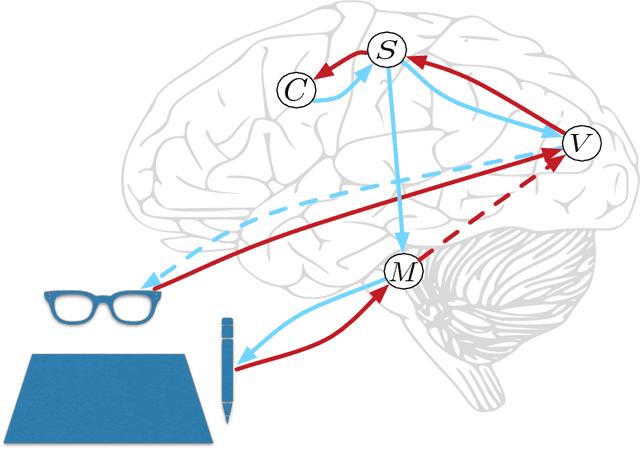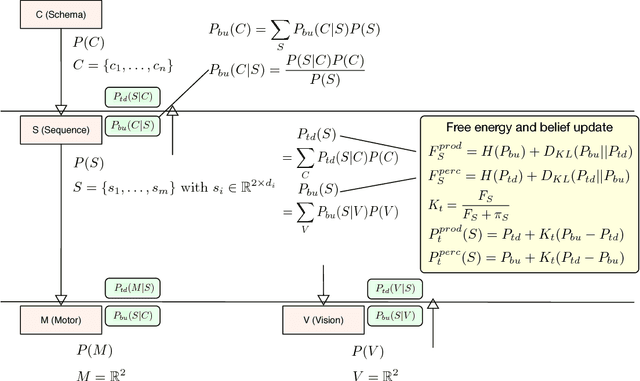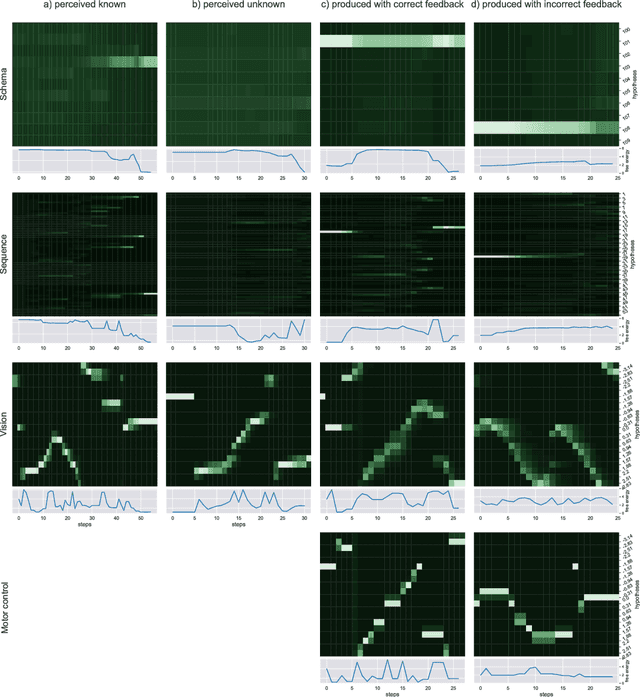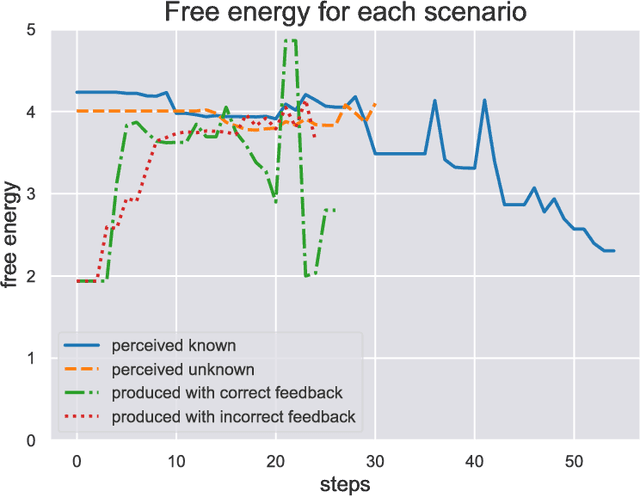A predictive processing model of perception and action for self-other distinction
Paper and Code
Oct 24, 2018



During interaction with others, we perceive and produce social actions in close temporal distance or even simultaneously. It has been argued that the motor system is involved in perception and action, playing a fundamental role in the handling of actions produced by oneself and by others. But how does it distinguish in this processing between self and other, thus contributing to self-other distinction? In this paper we propose a hierarchical model of sensorimotor coordination based on principles of perception-action coupling and predictive processing in which self-other distinction arises during action and perception. For this we draw on mechanisms assumed for the integration of cues for a sense of agency, i.e., the sense that an action is self-generated. We report results from simulations of different scenarios, showing that the model is not only able to minimize free energy during perception and action, but also showing that the model can correctly attribute sense of agency to own actions.
 Add to Chrome
Add to Chrome Add to Firefox
Add to Firefox Add to Edge
Add to Edge